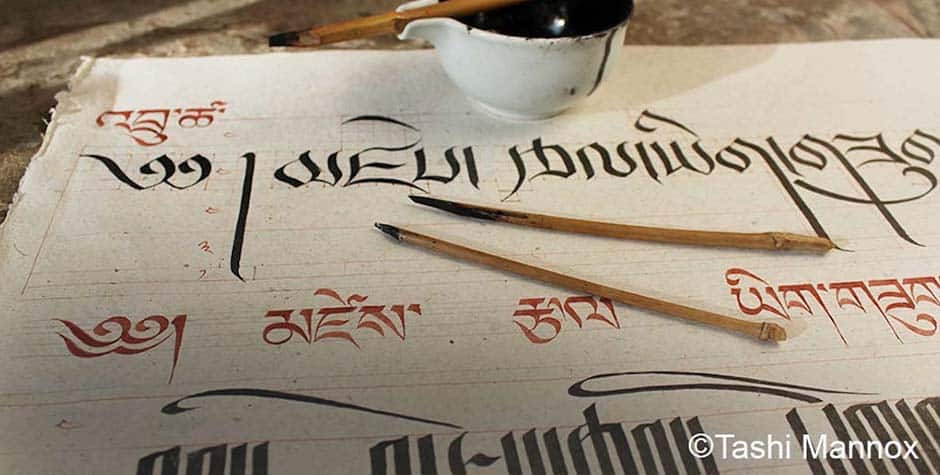The Tibetan Language is Tibetic language belongs to the Tibeto-Burman group of the Sino-Tibetan language family. It is mainly spoken in the Tibet Autonomous Region of the People’s Republic of China, Nepal, Bhutan, and parts of Northern India.
Standard Tibetan has three main registers: natural speech Phel-ke, formal speech Shea-sa, and the formal literary and religious style Choe-Ke, which is used in religious and classical literature.
Many scholars divide the Tibetan language into groups of four dialects; Central, Southern, Northern, Eastern, and Western.
According to the census, there are 1.2 million speakers of Standard Tibetan, which is also known as Lhasa Tibetan and is the Tibetic dialect with the most speakers. It is mainly in the Central part of Tibet. Hence, it is known as the central Dialect.
The Southern dialect is mainly use in the Southern part of Tibet, Sikkim, Bhutan, and Nepal.
The sound systems in the western dialects are more conservative, having best preserve the initial consonant clusters and the final stops (sounds form with complete closure in the vocal tract) of Old Tibetan and having less development of tones than the other dialects.
The Northern Tibetan Dialect is mainly spoken in the nomadic community in Northern Tibet, some part of Sichuan and Qinghai province of China. It is commonly known as the Amdo Language.
The eastern Tibetan dialect is also call as Kham dialect. It is spoken in the Part of Qinghai, Sichuan, Part of Yunnan and Eastern Tibet prefecture of Qamdo.
Though the spoken dialect in the Tibetan language is different from localities to localities. Yet the Written word is all the same.

Written Tibetan Language
According to Tibetan Buddhist history, The written language was first introduce in the 7th Century by the Thonmi Sambhota. He was sent to India by Tibetan King Songtsan Gampo to learn the language in India to make a new and common Tibetan written language. He is then reputedly devised a script for Tibetan based on the Devanagari model. Sambhota also wrote a grammar of Tibetan based on Sanskrit grammars.
The new Tibetan alphabet was use to write Tibetan translations of Buddhists texts. The first Sanskrit-Tibetan dictionary, Mahavyutpatti, appear in the 9th century. Woodblock printing introduce from China and it was used in Tibet from an early date. Nowadays it is still used in a few monasteries.
Tibetan literature is mainly concern with Buddhist themes and includes works translated from Sanskrit and Chinese and original Tibetan works.
Yet, there are many books about the Bön Religion, The Pre-Buddhist religion native to Tibet. According to many Bön scholars The Tibetan, written languages is existing before the 7th Century with a difference. And during the 7th century, the Thonmi Sambhota help to standardize it.

Tenzin Travel is the best Tibetan Travel agency in Tibet. Our agency is one of Tibet’s most experienced tour operators, with over 20 years in the industry. Founded by a local Tibetan family with decades of expertise as guides, managers, and route planners. We craft personalized itineraries for every traveler. Our agency is the highest-rated and most recommended Tibet travel agency on TripAdvisor, Google, and Lonely Planet.
We can make holistic arrangements for your trip to Tibet. Including a Tibet Travel Permit, a Tibetan tour guide, flight tickets, train tickets, vehicle arrangements, and hotel bookings in Tibet.
Our Lhasa office is just steps from Barkhor Square. All our Tibetan team ensures deep cultural, linguistic, and religious insights, setting us apart from other agencies.
Beyond tourism, we support Tibetan communities by donating a portion of each tour to local projects. Your travel to Tibet is about more than profit—it’s about the opportunity for us to give back.















